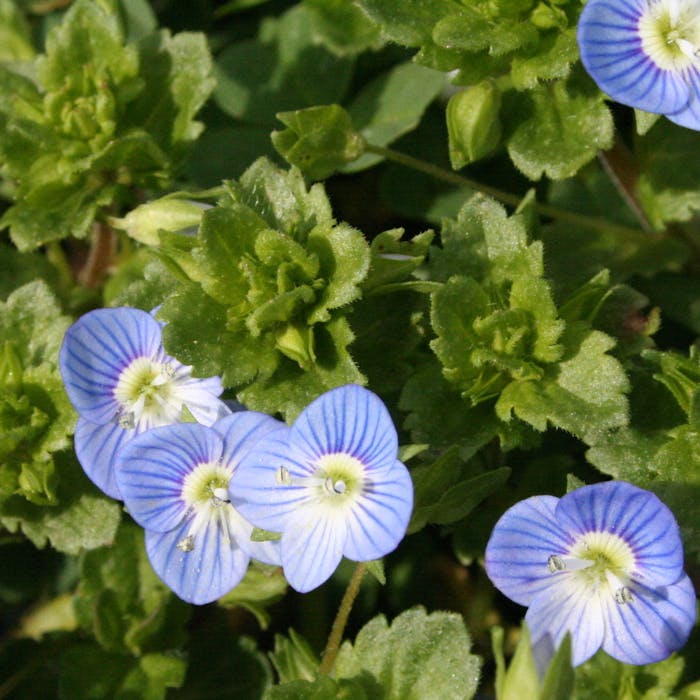
The cheery beauty of the wild Speedwell
The common field speedwell is a rather prolific British wildflower, generally treated as a weed, but bringing a cheery beauty to gardens nonetheless. Its tiny blue flowers can be spotted in many a lawn, appearing for most of the year.
The common field speedwell (Veronica persica) originated in Asia. Since becoming established in Britain around 200 years ago, it has become one of the most widespread naturally growing plants.
It was first seen in the wild here in the 1820s, and spread throughout the country in the l9th century. It can now be found as an arable weed in gardens, on allotments, on wasteland and roadside verges.
The plant likes disturbed soil and can often be seen proudly growing on top of a pile of earth!
The flowers are about 10mm diameter and bright blue. The flower head is made up of four petals with distinctive darker blue stripes radiating outwards. One of the petals is smaller and lighter than the others. The leaves are triangular, serrated and hairy.
The common field speedwell is one of the most persistent winter weeds, which only stops flowering in the very coldest weather, but carries on if the winter is mild. It is less common in the north of Scotland.
The name veronica will be familiar to gardeners as many of the common field speedwell's relatives have been cultivated as garden plants, usually sporting blue flowers.
Further reading
Links to external websites are not maintained by Bite Sized Britain. They are provided to give users access to additional information. Bite Sized Britain is not responsible for the content of these external websites.
